NOTE TO EMAIL SUBSCRIBERS: You can read this email in full here without section breaks.
In Refugees: La Sagrada Familia, artist Kelly Latimore says this:
“We can see the journey of any refugee as not simply a political issue, or an issue at all.
We are talking about people, with names, faces, and stories.
They have something to teach us about what we know, about who God is, the world we live in, and who are our neighbors.
This is the real work of being human and of art. Being more present. Go be present.”
Hi again, Friends:
Today’s note to you is Part Two of a three-part series on my Border Encounter experience at the end of January. If you missed it, you can read Part One here.
I have had to fight the internal pressure to share every piece of information I learned through Abara during the Border Encounter because, for me, every layer of information and experience informed the next. I want to be able somehow to walk you through each workshop and shelter experience, and the history of those who have come through this pivotal crossroads of The Pass, El Paso. It has troubled and disturbed me since returning home. I want to give you the experience that I had and I know that I can’t.
I’m sure you have been in a similar situation. You have a personally transformative experience and you come home and try to share it with your loved ones, and while you share from your heart, it is still nothing like the experience you actually had, which is inexpressible. It’s an impossible situation, and yet, somehow we feel we must try.
I’ve struggled not only with what to share with you but how to share it.
How do I explain the impact of hearing stories first-hand from travelers like José, Onassis, and Edwin without somehow turning them into a commodity? Or making it seem as if this one story encapsulates the entirety of who they are? How do I treat their stories with dignity and respect in the telling of them? How do I share from my heart and the impact of their stories without centering myself and making the story about me and how it made me feel?
As with anything else I seek to practice, it usually starts with lots and lots of questions.
It is better to know some of the questions than all of the answers. - James Thurber
And then sometimes it’s followed with inner whining and bemoaning the skills I don’t have. In this particular case, I am frustrated that I am not a journalist or a historian. I am not an expert in border issues or global migration. I then remind myself that you did not arrive here for that. You have other places for that kind of information. What then can I offer you? I feel such a strong desire to weave threads of understanding.
What I can offer are a few takeaways from the sessions and a few stories that impacted me most deeply, with the hope that perhaps you will feel a nudge to dive deeper and learn for yourself about this situation.
So this is not only about my experience, but as I tell it, it is about learning how to share the reality of the despair that many people face while also illuminating their resilience, spiritual courage, authentic hope, and faith.
I know I have a lot to learn. Let’s get started and see how it goes.
PART TWO: Waist High in the Water-Entering Into Their Stories
THURS. JAN 26: DAY ONE OF THE BORDER ENCOUNTER WITH ABARA
Since our group practices contemplation, we began our days in quiet together, seeking to anchor ourselves in the communion of silence and relinquishing any agendas we might have carried into the space with us. From there, we began a series of workshops to give us a beginning foundational understanding of the key themes and theories surrounding the Border Encounter experiences we were about to share together.
I’ll get to the stories soon, but first, here’s some of the groundwork we needed before meeting anyone in the shelters. I appreciated the thoughtfulness and respect with which the Abara staff prepared us to enter into these spaces from a space of humility, respect, and dignity for all.
Our first workshop was titled: Migration Root Causes + Central American Realities, in which we learned about global migration, push-pull factors, and global realities.
”Few people want to leave their homeland, culture, family, or the familiarity of one’s life. Many who seek refuge, or who are forcibly displaced, sojourn throughout Mexico, Guatemala, Honduras, El Salvador, Haiti, Cuba, and various African nations.” - Abara
“Violence and insecurity, poverty and family reunification remain important drivers of migration from Central America.” World Migration Report Stats (pgs. 104-113)
Next we visited Ciudad Nueva Community Outreach Center for a tour and survey session on the Theology of Migration with Executive Director, Bethany Rivera Molinar. Bethany offered new perspectives on some of the well-known Biblical stories like Abram and Sarai, Ruth and Naomi, and Joseph viewed through the lens of migration. It was helpful to hear her speak to the powerful themes of displacement, migration, and poverty woven throughout Biblical stories.
Joy was struck by learning that their definition of success “is defined by members of the migrant community. The center is truly community-led and resourced, while most parishioners of the affluent Catholic church adjacent to the property literally don't cross the street to become involved with the mission.” Additionally, “Its commitment to helping migrant children overcome the shame that they have about having to translate for their parents by using Biblical stories like Joseph coaching his distrusted migrant shepherd brothers on how to talk to Pharaoh, and teaching these modern migrant children they are "heroes of their faith" like Joseph by helping their parents.” Transforming internalized shame into strength.
We met some of the staff and hard-working volunteers as they prepared for a weekly shopping activity where community members can come and shop for groceries to take home at no charge.
For those of you who are familiar with the work of Common Ground Community in Louisiana (a movement that a handful of us began two decades ago and is still active today), Ciudad Nueva’s work felt very much like the work we did there. It began with listening to our neighbors and creating relationships and grew to serve the needs of the community, working hand in hand. Visiting this community center felt like coming home.
Back at the Abara offices, we shared some ridiculously good enchiladas prepared by a community member and continued processing our experiences as a group. Next was a workshop on Immigration Law 101 by Abara team member Gustavo De Los Rios. You can imagine what a daunting task it must have been for Gustavo to share cliff notes on immigration law and what it really takes to immigrate to the US.
When you add the additional factors facing those escaping violence, it is a deeply complex and difficult process. Let me share one example:
(Trigger warning ahead. I’m going to begin sharing some difficult stories. Violence, sexual violence, and murder.)
Before we were taken to visit shelters in person, Abara wisely shared some filmed stories from interviews with people in the migrant shelters. One of the men being interviewed told the story of his family and how they fled Honduras after pressing charges against a neighbor who raped their 8-year-old son. Because the rapist had relatives in a drug cartel, they killed the young boy and burned down the family’s home as retribution and also to pressure them to drop the charges. Stories of other migrants walking across slippery stones covered with what they assumed was moss, only to discover, to their horror, that it was human remains.
The question we sometimes hear, uttered in frustration, “Why can’t they just follow the rules and come in legally?” was answered. But the answer is nuanced and highly complex. Immigration to the US is a lengthy and expensive process that can take decades, and for people who are in dire straights, it’s just not an option. As major social and economic factors shift in South America, many are running for their lives.
Guided Reflection: Impact of Xenophobic Rhetoric on a Binational Metropolis at the Walmart Mass Shooting Memorial
In 2019, twenty-three Hispanic people were murdered in an El Paso Walmart by a young Caucasian man indoctrinated by right-wing extremist rhetoric who became convinced the US is being invaded by brown-skinned people. He then drove 650 miles to an El Paso Walmart to shoot as many as he could. Witnesses reported that he turned his rifle away from other people to select only those who were Hispanic.
Abara team member Nate Ledbetter beautifully ushered us through a sobering and heart-rending meditation and processing session at the memorial, highlighting principles of non-violence as taught by the King Center. We also shared in solidarity with other cities that have suffered mass shootings.
He offered Abara’s grief statement as well as stories of those who were murdered in this mass shooting: the beloved soccer coach, the young parents who fell on top of their 2-month-old baby, the elders. He explained the symbolism of the lotus flower engraved under the names of each person who lost their life that day. “The Lotus Flower has a unique life cycle. Its roots based in mud (our tragedy), it miraculously re-blooms every morning without residue on petals (our strength restored). The Lotus symbolizes many things, including serenity, purity, beauty, grace, fertility, and knowledge. We created it with 23 loops to signify the victims who lost their lives in the shooting. We added a shining yellow star to signify our resilience and hope. We are EL PASO STRONG!”
We were given time to take in the memorial in silence, with the gentle sounds of the water fountains comforting us. Pausing to read the names of each person and to walk the labyrinth if we desired. If you know me, you know how meaningful the labyrinth practice is for me. I was grateful to have had this opportunity at the memorial. We then gathered again and shared our feelings and thoughts with one other before getting back into the van to travel to our next stop. We rode in silence.
From this poignant and powerful experience, we traveled to our first migrant shelter at Sacred Heart church.
El Paso Shelter Visit At Sacred Heart: José and Onassis
We parked down the street from Sacred Heart and made out way to the shelter, passing many people and their belongings on the street. Sacred Heart operates an independent shelter inside their church where they are able to offer sanctuary to the undocumented because they don’t take federal money.
Sacred Heart is “a border community with roots both in Mexico and in El Paso’s ‘Segundo Barrio’. Our community is mostly made up of immigrants who have a host of needs and challenges which are directly related to their being uprooted. Our parish, founded and staffed by Jesuits, is the oldest in El Paso.” - Sacred Heart website
We entered through a side door that opened up to a gymnasium. I noticed the stage area at the end of the gym and my first thought was, oh the stories that are told here. It held various supplies and boxes and tables. Next, along the longer side of the gym were people resting on makeshift pallets. The middle area of the gym held tables for meals and meetings. We were greeted by the shelter director, a middle-aged Hispanic woman who immediately made us feel welcome as did the Caucasian Red Cross volunteer who had been working there for the two months since they opened. I’m sorry to say that I’ve forgotten their names. We greeted the guests with a quick “Hola!” and then we were given a short tour of the facility and its separate donation rooms for food and clothing.
We wound our way back to the gym which had about 10 people inside, mostly due to their injuries, many more guests were outside the shelter during the day.
We asked the shelter director what we could do while we were there, assuming she would want us to help sort piles of clothes or donations. Instead, she said. “Yes, you could do that. But what would really help us is for you to talk to the people here.” That was exactly what we’d longed to do, to connect - human heart to human heart, so we eagerly agreed. We tentatively wandered over and struck up a conversation with two men who were leaning against the gym wall for support on their makeshift pallets of a mat and blankets. They were receptive and warm. Sami translated for us for a while and then Gail stepped in as translator when Sami had to go elsewhere.
José is a slim and engaging 28-year-old with a broken knee, which he uncovered to show us; and Onassis, age 36, quieter, but with a smile that would melt any heart, had a broken foot propped up on folded blankets. Both breaks came from falling off the border fence. I wasn’t sure if they had actually traveled together or separately, though both had made their way from Venezuela, a journey that took them about 4 months. They are able to stay at this shelter without documents, but once they heal they will have to make their way elsewhere.
At one point, José took out his phone and showed us a video of him riding across Mexico ATOP a train. Nothing to hold onto, no food or water, in the freezing temps, a blanket thrown over his head and body. They rode this way for days. Once they neared Juarez, they had to jump off the moving train so as not to be apprehended. They told other stories that were even worse. Stories of watching a woman’s 5-month-old baby being pulled out of her arms by the river as she tried to cross and how there was nothing anyone could do. Mama and baby both died. As I have said before, the fact that anyone makes it to the border given the conditions they must face is nothing short of miraculous. Many die before they arrive.
What the future holds for José and Onassis? I wish I knew. They have no plan, resources, or family contacts here. They both hope to find their way to Denver. I am holding out great hope that they make it. I live an hour from Denver and I know that Aurora has made a strong commitment as a city to welcoming immigrants. I would love to have Jose’ or Onassis as my neighbor. Their hearts touched my heart.
Our circle member Joy wrote this note home to her friends:
“The statistics are just staggering: More than 90% of women who make the journey are sexually assaulted. The stories of what’s driving these people are absolutely shocking, especially the asylum seekers. The faith of these people in the shelters who have nothing and are enduring so much trauma is incredibly humbling.”
Retired Border Patrol, Michael DeBruhl Shares His Story
In our final workshop of the day, we heard from Michael DeBruhl- Southwest Border Expert and retired Border Patrol on Historic and Current Border Realities. Michael gave us more context on the history of the area and Border Patrol. He is a retired Border Patrol Agent who now works for the shelter through Sacred Heart church which offers sanctuary to migrants regardless of documentation or not.
“So I was with the Border Patrol for about 26 years. I was born and grew up here. I went to the military at early age and I came back here and worked about 20 jobs until I applied for the Border Patrol mostly to get my father off my back. ( Lots of laughter)
So we were actually walking through a mall … and he's like, ‘There they are. Go sign up’. Okay, so that whole process took about a year. I got a call one day from Washington. It was the last day and he was like the last week of the fiscal year. Their money was gonna expire. So they reached way down to the bottom of the barrel. There was my name. Okay, you want a job? You gotta get up here real quick.”
During that time, he got involved with tactical units in every large sector. There are nine sectors along the southwest border. Each of these large sectors has special operations teams, and they handle high-risk operations for the sector. He started working on wheels teams and then applied for the National Tactical Unit. He was one of about eight people chosen and started working operations all along the 2000-mile border. He worked in South America, Central America, and went to Europe.
After that, he got a job in Washington working for the Border Patrol Chief. He received his own command and he was in charge of Puerto Rico and the Virgin Islands. When he came back his title was Operations Chief for the Rio Grande Valley Sector. He was eventually in charge of most of the Southwest border and roughly 10,000 agents That’s where he ended his career. Suffice it to say, Michael knows the border situation.
After he retired in 2014, he started seeing a lot of things happening on the border and with immigration, that in his words, ‘ I really couldn't be aligned with, you know… like separation of children from their parents. Just the way (people) were dying, demonizing everyone that was coming across. So I just started volunteering at a shelter here.”
“Eventually that shelter closed… and then when this crisis happened, Father Rafael Garcia (Sacred Heart) called me. I didn't realize the scope of what was happening. But that's the nature of this type of work. So the day I walked in, there were people just everywhere, and the shelter was open on an emergency basis, and we began adding some structure to it because it was chaotic at the time, you know. And so here we are…here we are. We were going to be taken over by what’s called the Opportunity Center here funded by FEMA, but since Title 42 was not lifted, all that kind of went away.”
I was moved by Michael’s willingness to dedicate his time to serving those most in need, in spite of, and also maybe because of, all he saw in his years of working at Border Patrol and how immigrants are being treated.
At dinner that evening we continued our informal processing and group discussion, grateful that we’re getting to meet with shelter residents, leaders, as well as students and young professionals in these networks on the front lines.
xo Mary
TO BE CONTINUED….
In the final part of the series, I will share what we learned from a visit with current Border Patrol Agents, a visit to a shelter in Juarez, and Panadería Rezizte - a bakery run by an artist/activist, as well more stories from the Border.
“later that night
i held an atlas in my lap
ran my fingers across the whole world
and whispered
where does it hurt?
it answered
everywhere
everywhere
everywhere.”
- Warsan Shire

“What wisdom can you find greater than kindness.” ― Jean Jacques Rousseau
In February, I will be donating a portion of my paid subscriptions to:
Abara House Donations: “Friends of Abara recently helped secure historic properties with a dream for "Abara House” located at the historic La Hacienda restaurant. Abara will enter a capital campaign in 2023 to raise funds to purchase and restore the properties. This property sits directly on one of the oldest known crossings of the Rio Grande River, an ancient indigenous pathway predating Spanish colonization in 1598, later becoming the famed "Camino Real de Tierra Adentro." We hope to honor the stories of this land by exploring our histories, the beauty, and the tragedy, and the stories that are yet to be written.” - from the website
Thank you for reading! Did this piece resonate with you? Take a moment to share it!
If you enjoyed this piece, please let me know by tapping the heart to like, comment with your thoughts, share with someone you think will enjoy it, and subscribe to get instant access to my future work right to your inbox.
⌇ Website


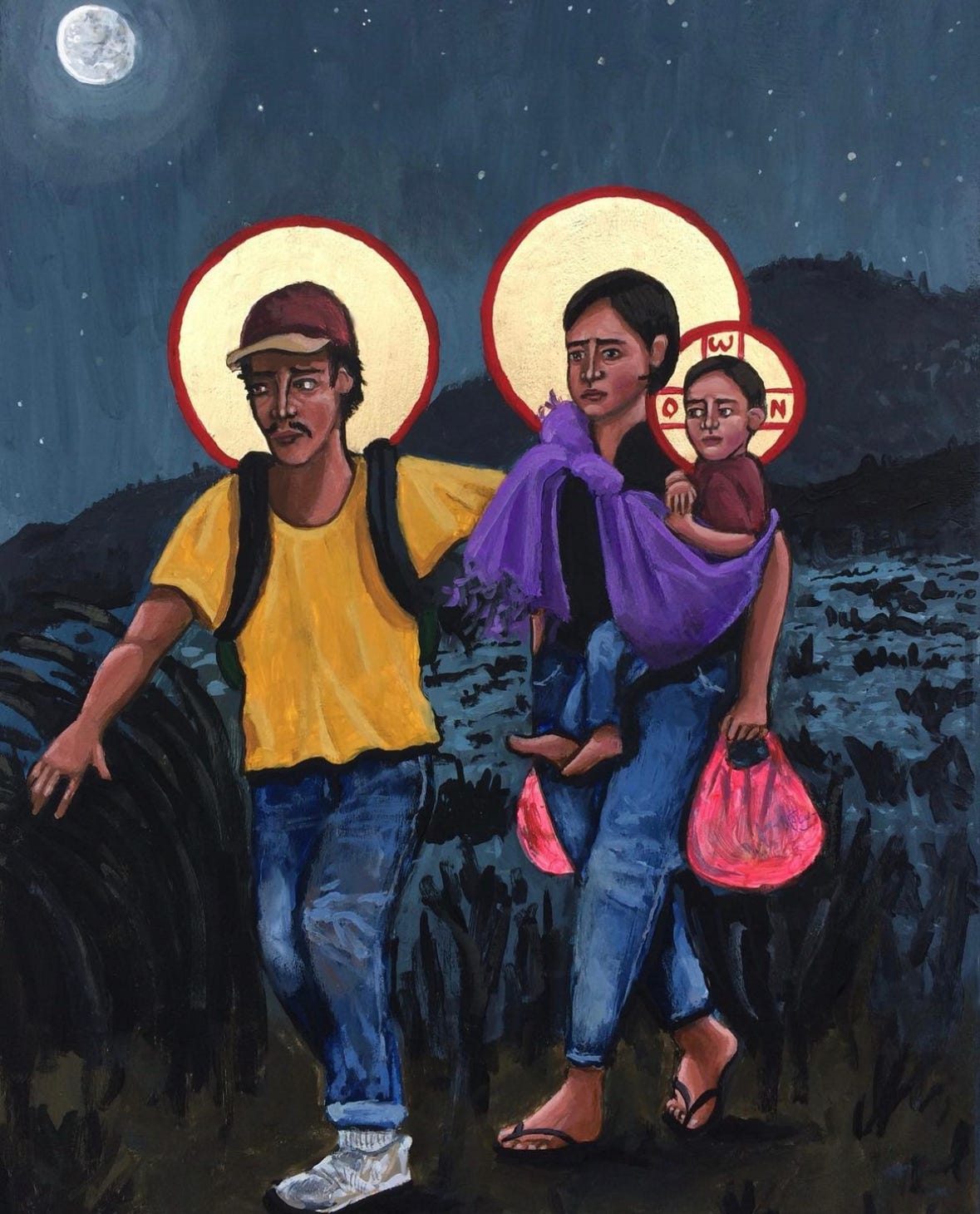
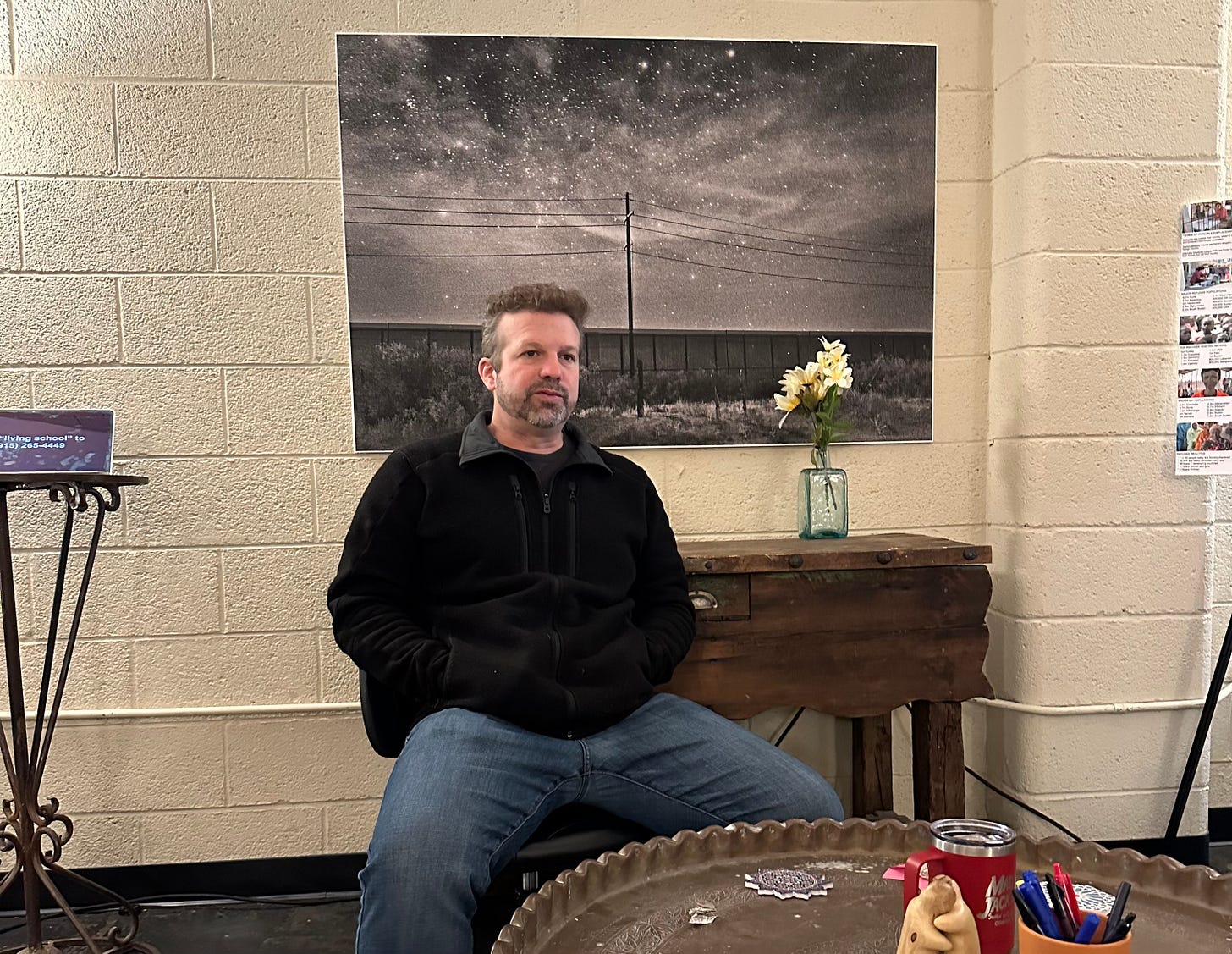
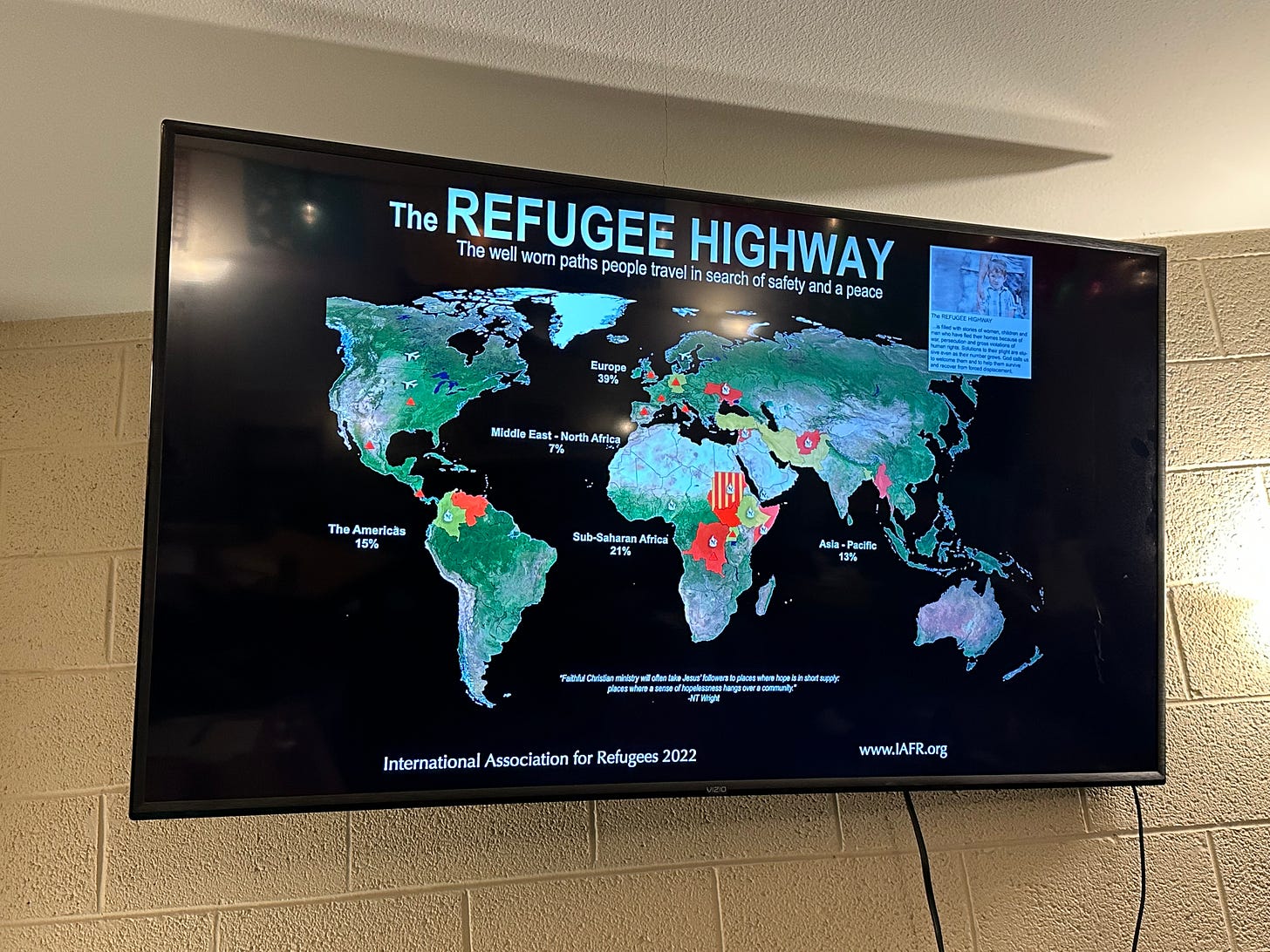

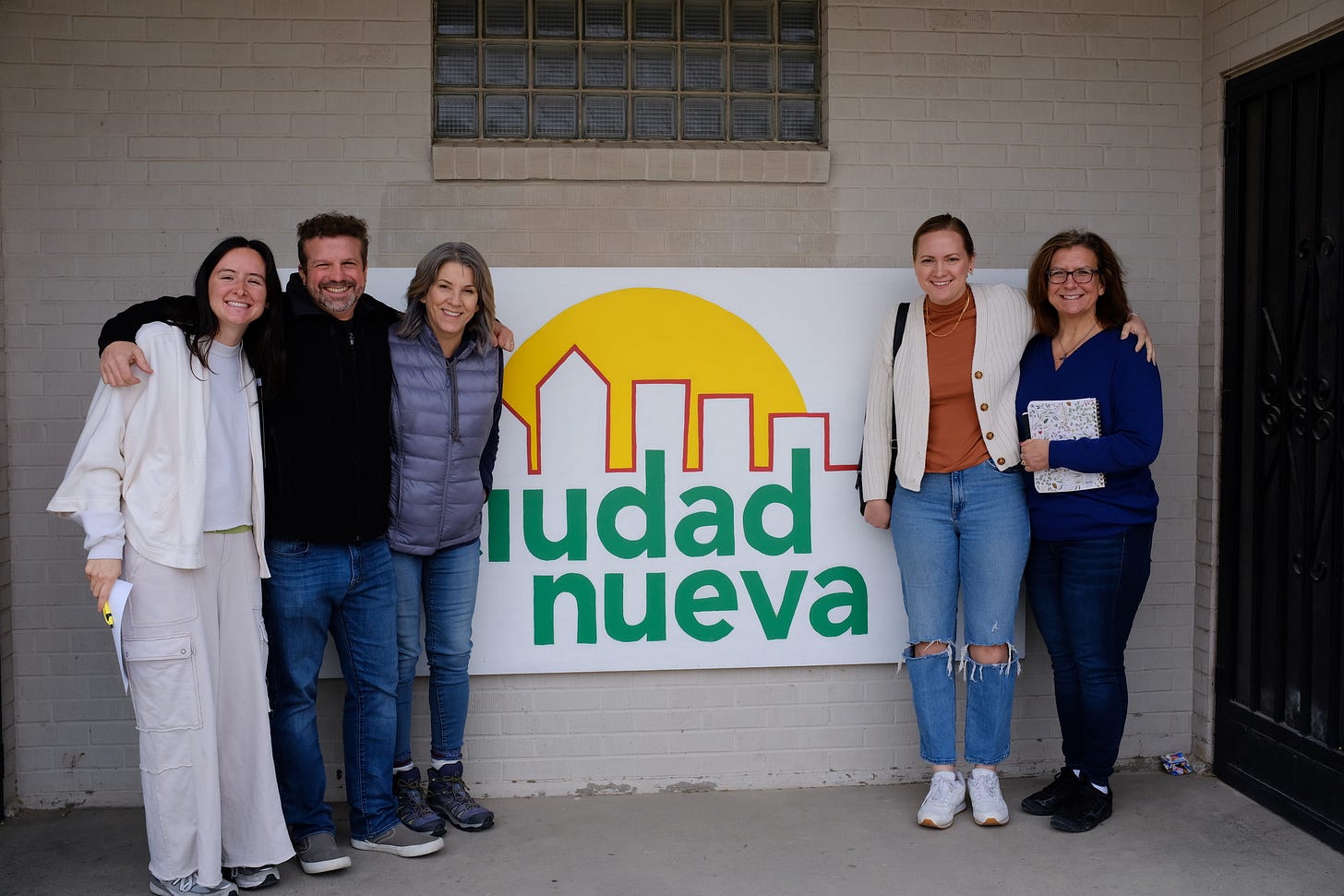

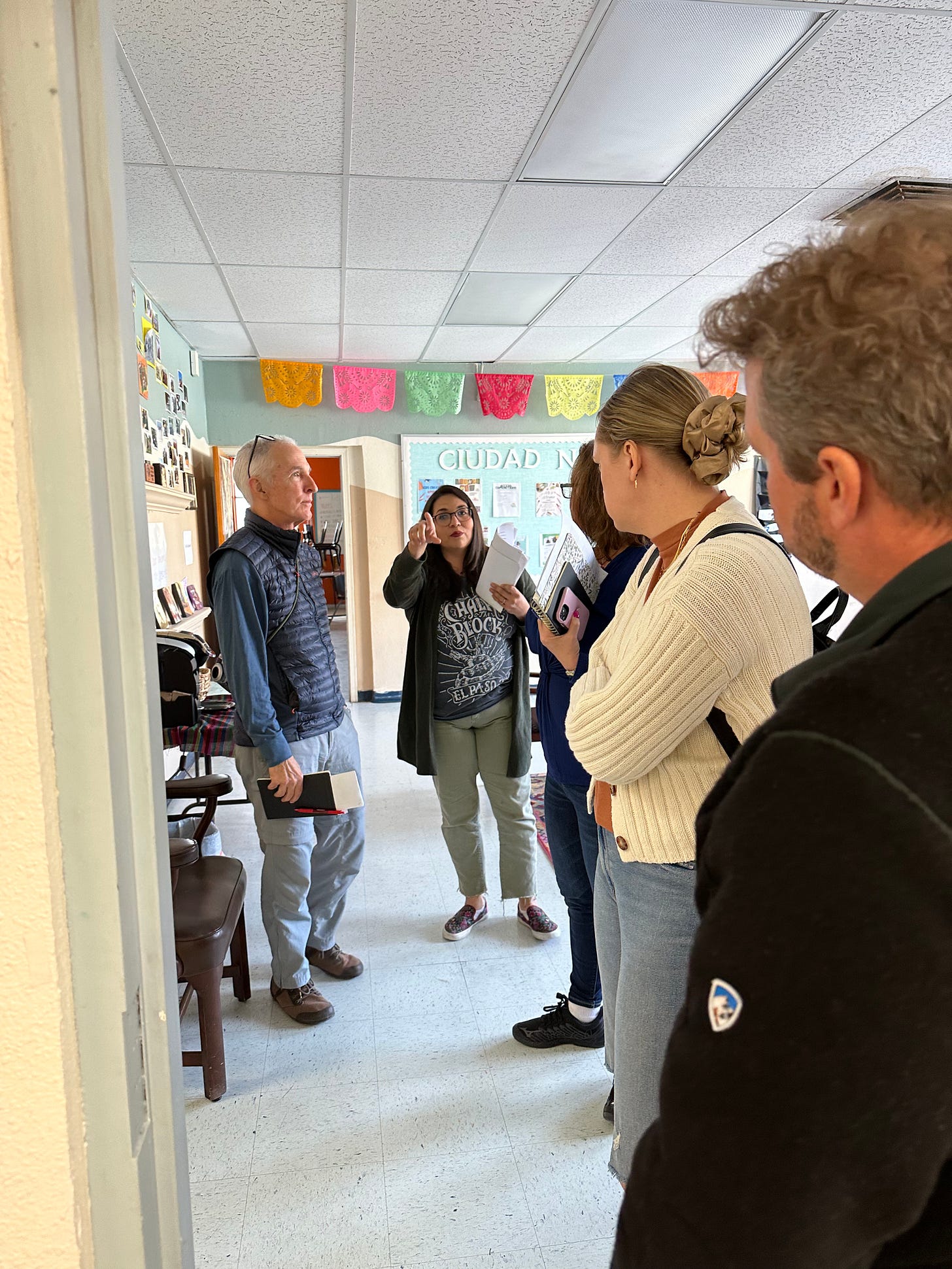
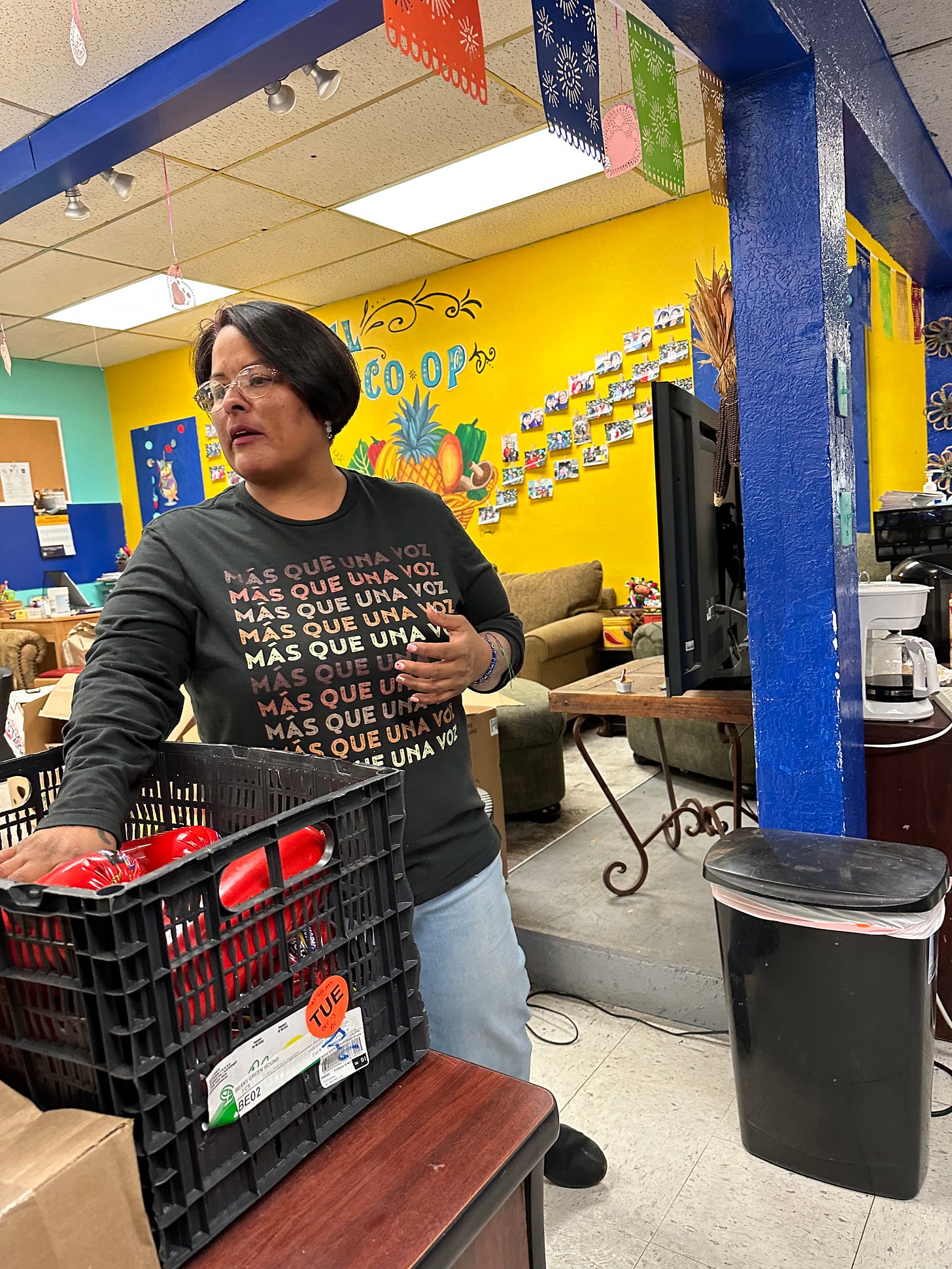



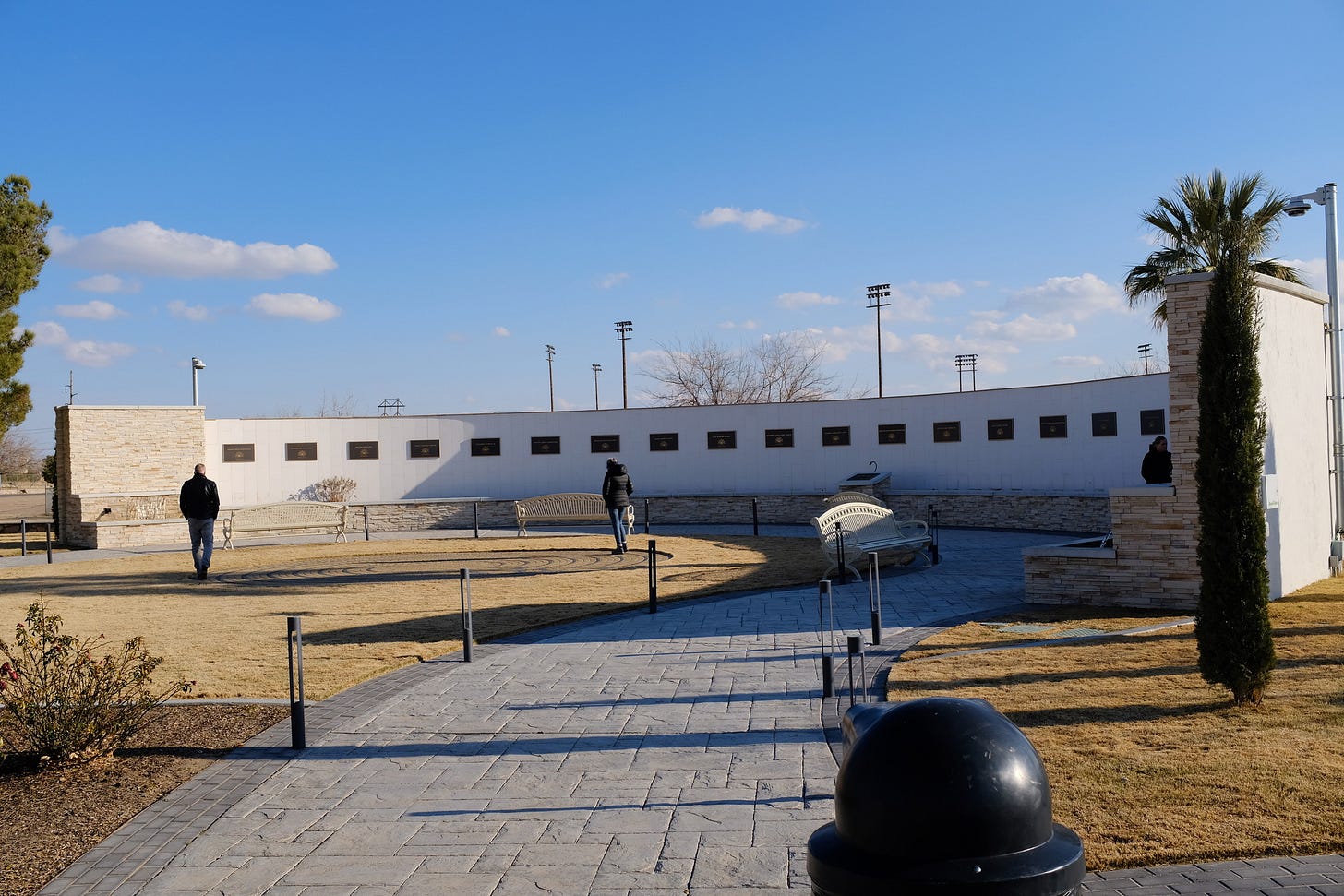
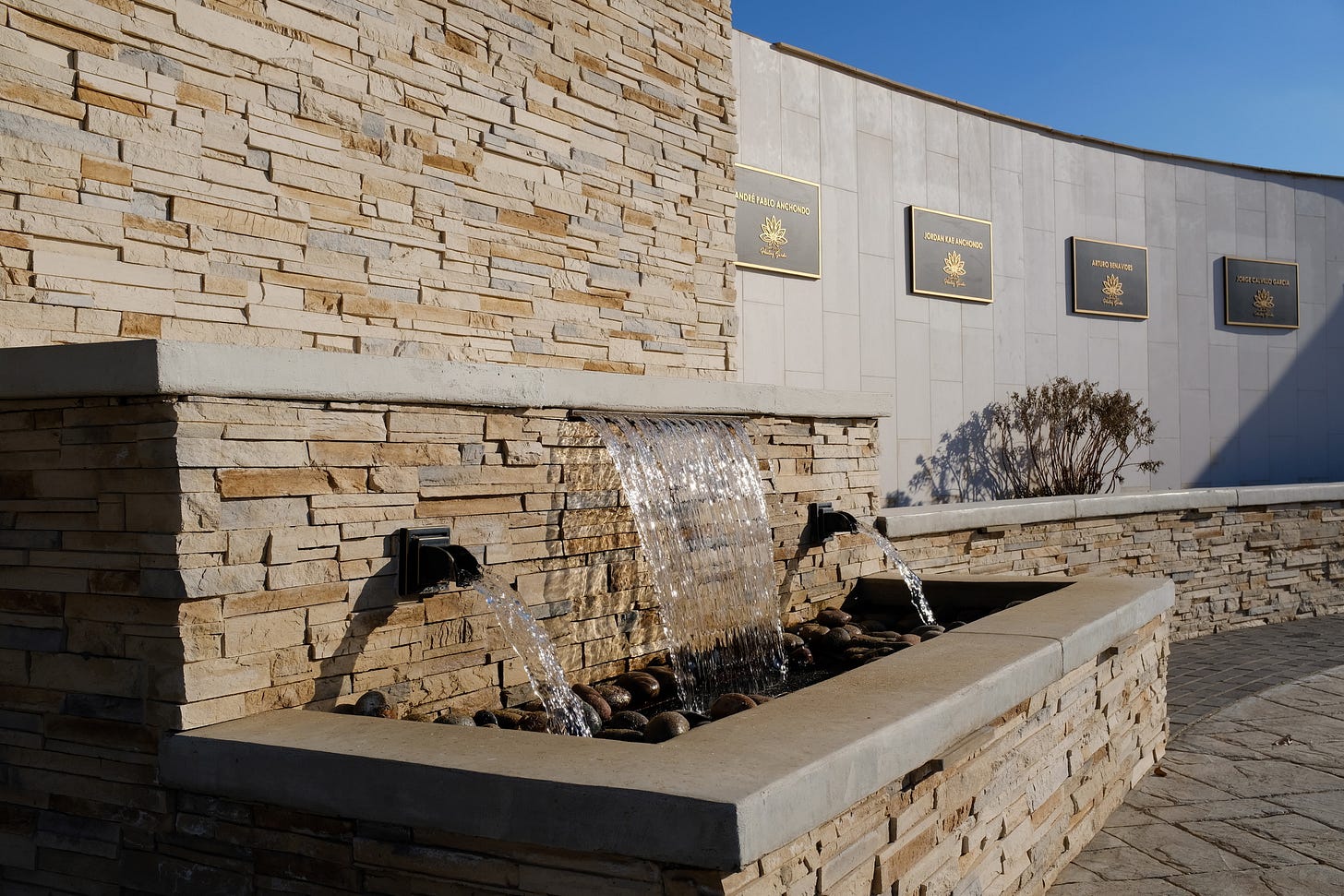
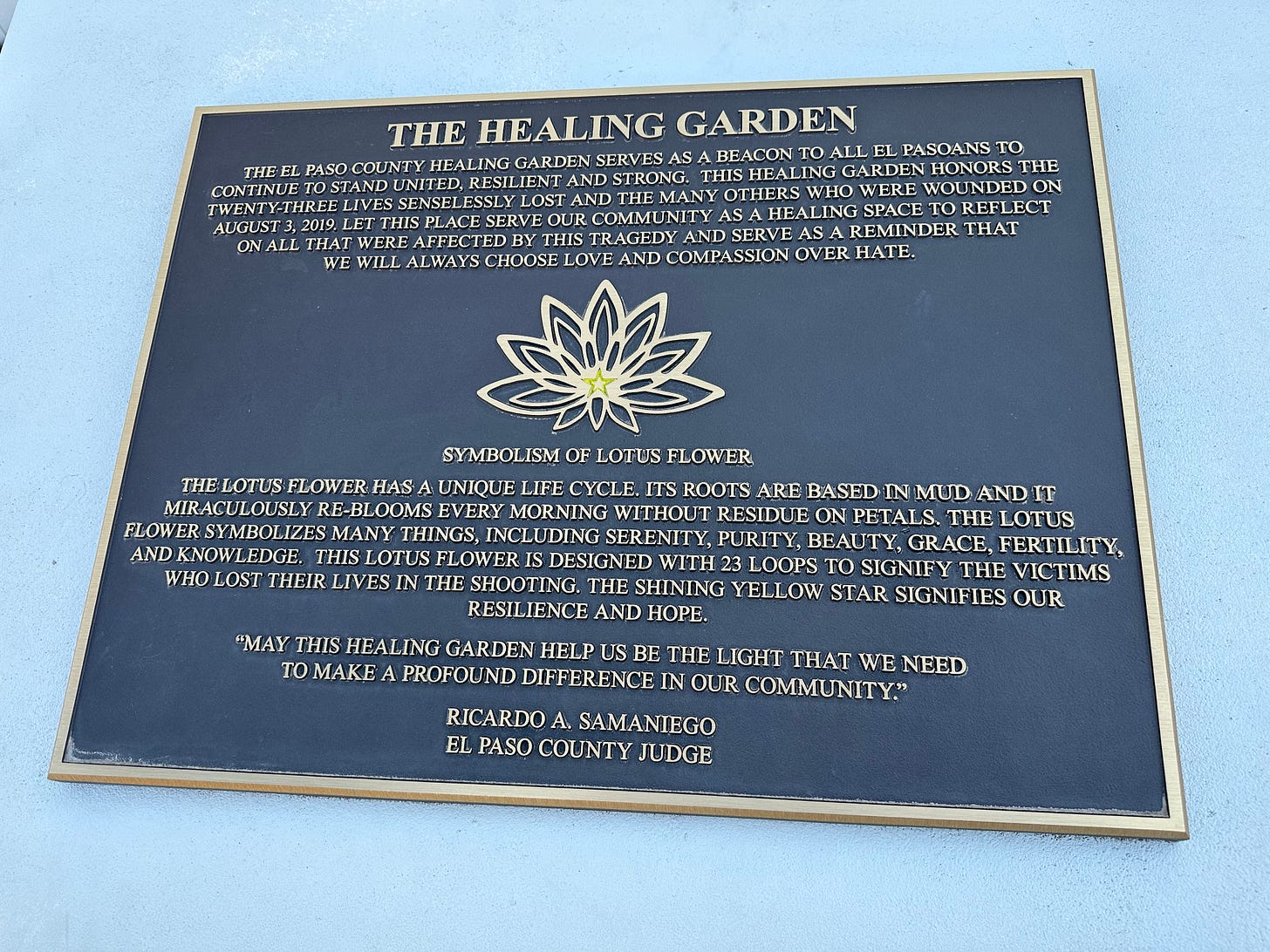

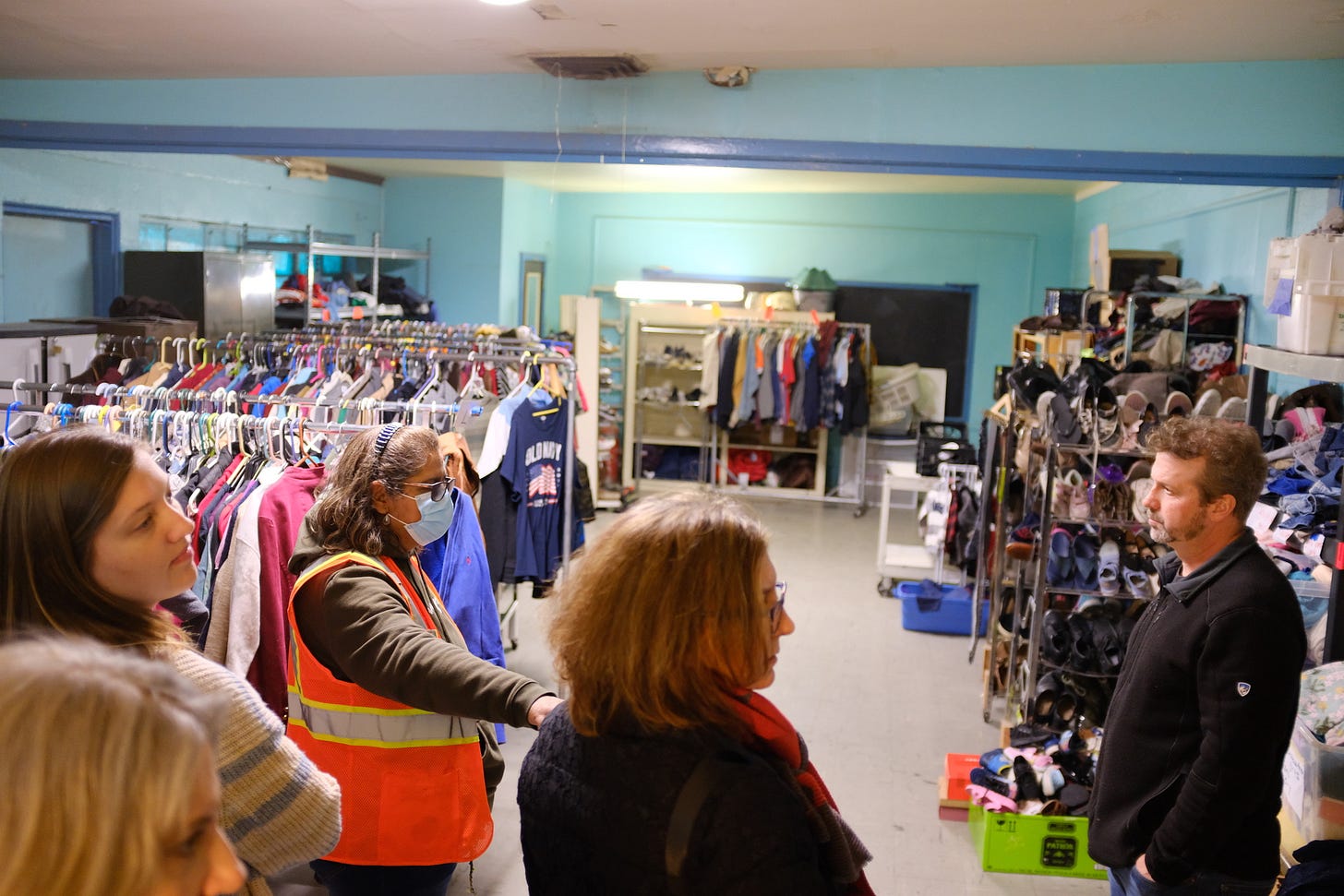

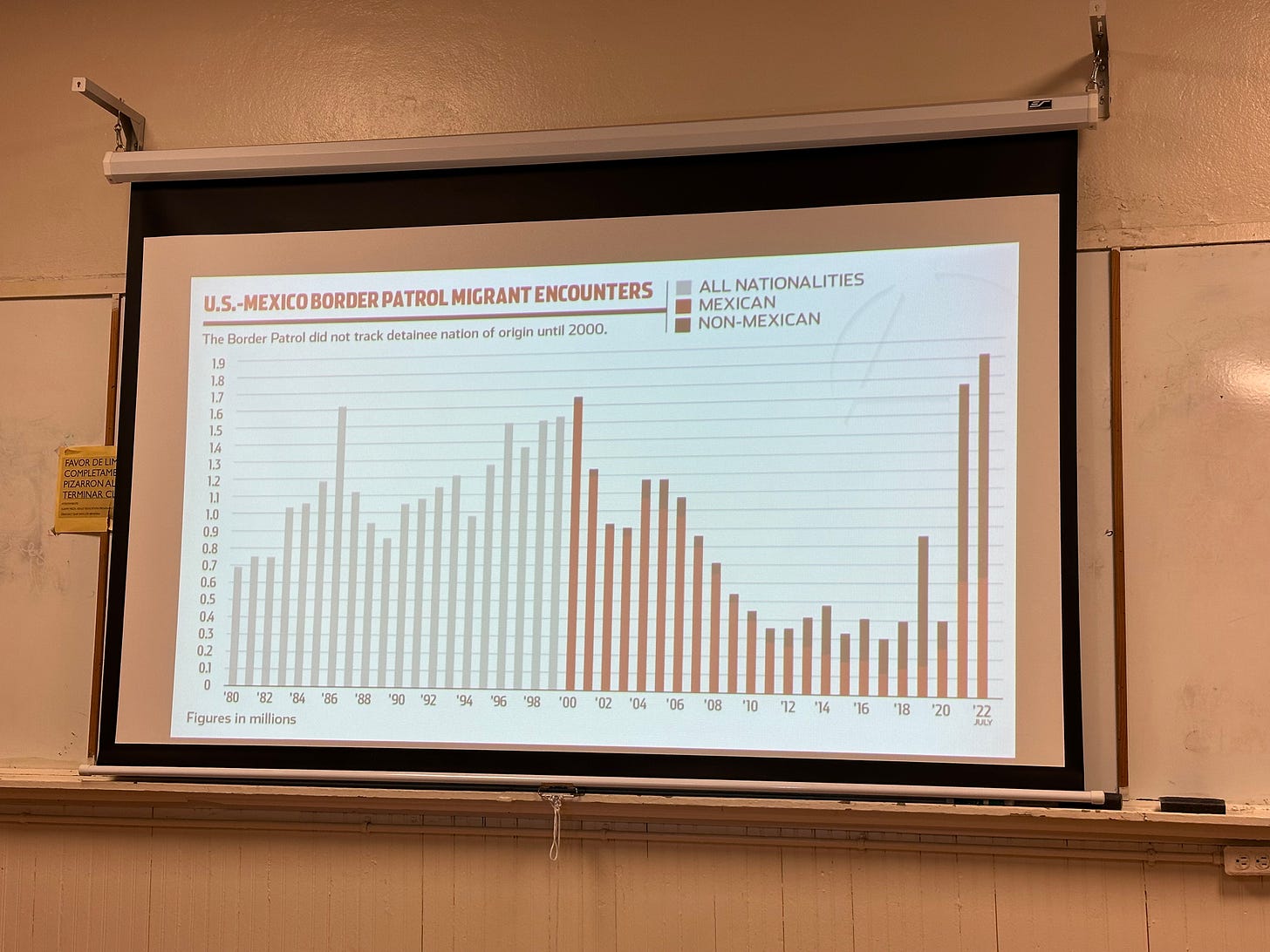



I’m grateful that you are sharing this deeply moving experience with us. Your reflection beautifully honors the stories and pictures you are sharing with us. Thank you! 🙏❤️
beautifully written